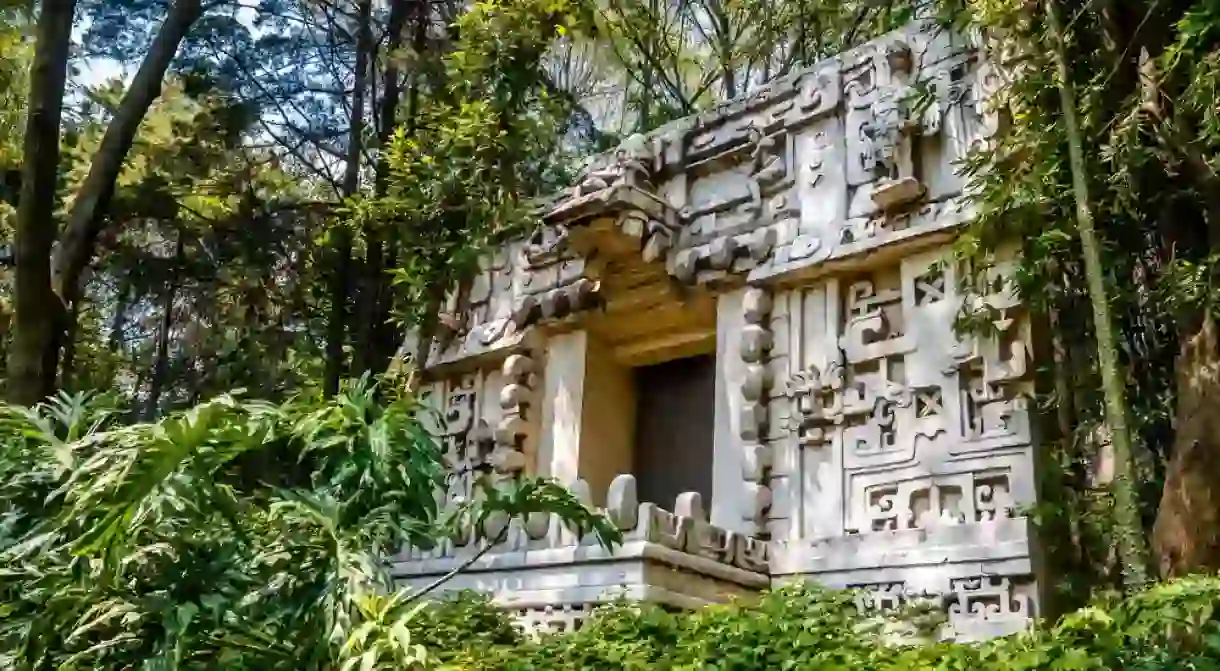The Museo Nacional de Antropología’s 5 Must-See Exhibits

The National Anthropology Museum is Mexico City’s most globally recognised, vast and frequented museum, with thousands upon thousands of annual visitors. Situated within the lush surroundings of Bosque de Chapultepec, it’s highly recommended that you visit a few times, simply because of the scope and scale of both the place and its massive Mesoamerican artefact collection. If you’re pushed for time, however, here are the five must-see exhibits that you simply cannot miss.
Planning a trip to the National Anthropology Museum? Be sure to book ahead onto a highly recommended tour of the museum for an unforgettable visit. Whilst you’re there, why not book onto a top-rated tour of Mexico City to make the most out of your visit to the city.
Piedra del Sol
Let’s get the most obvious one out of the way first; the infamous Aztec sunstone (sometimes wrongly referred to as the calendar stone) that was unearthed during the building of the Metropolitan Cathedral in 1790. Weighing in at 24 tonnes, this is a truly magnificent archaeological masterpiece that may well seem strangely familiar, probably because it features on the back of the ten-peso coin. While many theories have been proposed about the meaning of the sun stone, no common conclusion has been reached. Nevertheless, it’s easily the most emblematic exhibit of the Anthropology Museum.
Experience the intricacies of Mexico City’s storyline by booking ahead onto these highly recommended cultural and historical tours of the city.

Moctezuma’s Headdress
Moctezuma II was an Aztec ruler who was in charge during the time of the Spanish Conquest, and legend has it that this headdress belonged to him. Made from vibrant, peacock blue and green quetzal feathers (along with those of some other birds) which are sewn with gold thread in a semi-circular arc around the headpiece, it’s an unmissable and spectacular piece of Mexican history. Having said that, the National Anthropology Museum is only in possession of a replica of this magnificent artefact, as the genuine one rather controversially resides in Vienna.
Statue of Xochipilli
This 16th-century Aztec statue was discovered at the base of Mexico’s second tallest mountain Popocatépetl in the 19th century. Depicting the figure of Xochipilli, the Aztec god of art, games and dance, it appears to show him in the midst of an ecstatic, drug-induced state. This interpretation is reinforced by the seemingly hallucinogenic plants which are carved all over it and his body language and positioning. A fascinating example of Mesoamerican sculpture, detailing cultural experiences that many agree have never been depicted in European art, it’s certainly a must-see.

El Paraguas
Not technically an exhibit in itself, El Paraguas is an iconic installation within the National Anthropology Museum and will be almost instantly recognisable to most who have already visited or even done some light research into this museum. Located in the central courtyard, it’s a towering water feature of sorts which was constructed in 1964 at the same time as the edifice itself. Made of concrete, there is a constant and almost deafening cascade of water streaming from it on a daily basis. However, it is a must-see in the museum.
Pakal’s Tomb
A replica of the original, which is still located in the magnificent archaeological ruins of Palenque in Chiapas, the National Anthropology Museum’s version of Pakal’s tomb is just as intriguing. Famed for having an incredibly long 68-year reign, K’inich Janaab Pakal I (also spelt Pacal) was a Mayan ruler. The replica of his tomb in Mexico City features an impressive display which includes his jade funerary mask and many beaded articles, the originals of which were found on him when his tomb in Palenque was discovered in 1952.
The Best Trips and Tours in Mexico
Historical Landmark

Mexico is one of the most exciting countries in North America, if not the world, with its lively city streets brimming with culture, music and some of the best street food you’ll find anywhere. But it’s also a country of fascinating history and amazing natural wonders, with Aztec and Mayan temples found right next to mystical cenotes.













